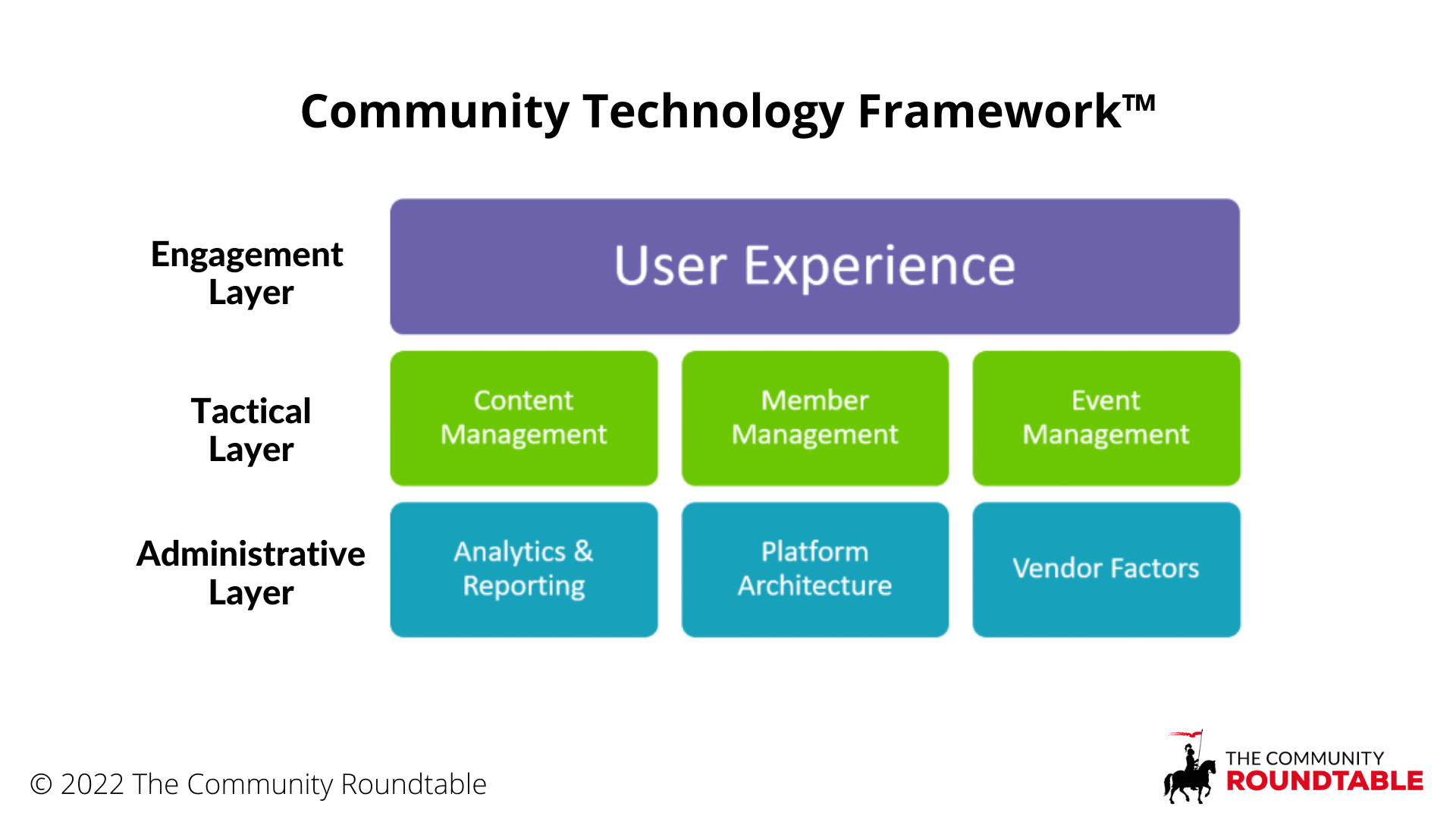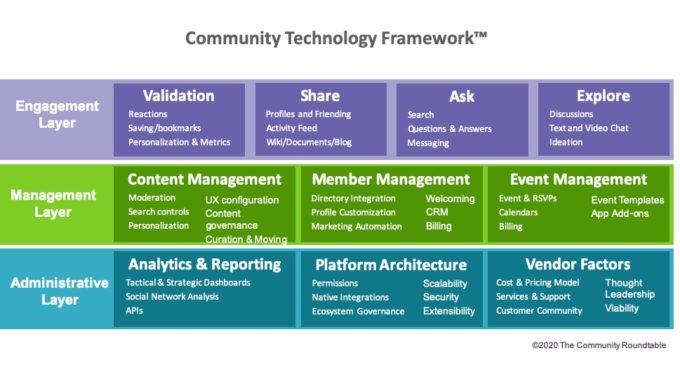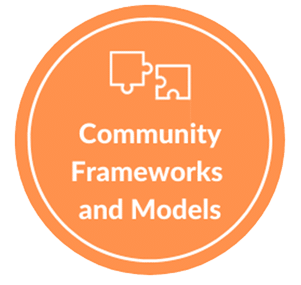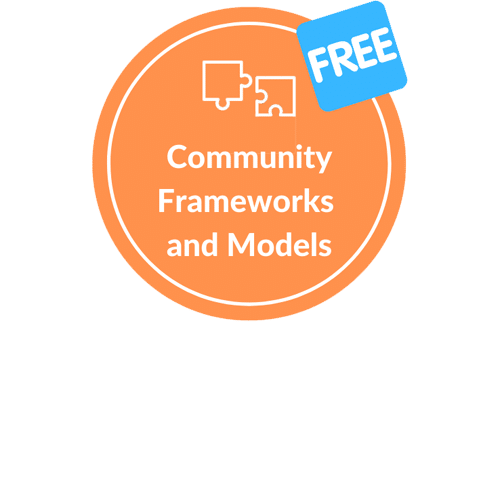The Community Roundtable developed the Community Technology Framework™ in 2019 to acknowledge that technology is what enables community professionals to engage and lead in new ways, and is a critical component of a successful online community program.
While we believe that technology ≠ community, a thoughtful community technology strategy ensures that you have the technology in place to create an effective and elegant community solution. Use the Community Technology Framework™ in conjuction with our other community models and frameworks to ensure you are building best-in-class community programs using common language.

Walk through the Community Technology Framework™ in this short video:
There are three layers of the Community Technology Framework™.
Each of these layers – the engagement layer, the management layer, and the administrative layer – are important for a mature engagement platform. This structure reveals why community strategy is critical to a successful community or engagement ecosystem – it informs how each of these layers is structured so that the user experience, management tools, and administrative governance are aligned for optimized performance. This structure also helps reveal why a sole focus on the user experience limits the growth, maturity, and value of a community program.

Engagement Layer
The Engagement layer creates the user experience and is made up of the features and functionality that allow engagement behaviors to happen in a community. The Engagement Layer is the most visible layer of community technology to the members.

The four components of the Engagement Layer of the Community Technology Framework™ are:
- Validation - reactions, saving/bookmarking, personalization and metrics
- Share - profiles and "friending" or connecting, activity feeds, wikis, documents, blogs
- Ask - search, questions and answers, messaging
- Explore - discussions, text chat, video chat, ideation
Management Layer
The tactical or management layer is concerned with the tactical activities of a community manager. This includes content, member, and event management tools.

The three components of the Management Layer of the Community Technology Framework™ are:
- Content management - Moderation, search controls, personalization, UX configuration, content governance, curation
- Member management - directory integration, profile customization, marketing automation, welcoming, onboarding, CRM, billing
- Event management - event rsvps, calendars, billing, event templates, app add-ons
Administrative Layer
Administrative Layer – The administrative layer is also known as the back-end of the community – it houses the inner workings of the community.

The three components of the Adminstrative Layer of the Community Technology Framework™ are:
- Analytics and reporting - Tactival and stratgic documents, social network analysis, APIs
- Platform Architechture - permissions, native integrations, ecosystem governance, scalability, security, extensibility
- Vendor factors - cost and pricing model, services and support, customer community, thought leadership, viability
Selecting a Community Technology
- Start with Strategy: if you do not, the complexity of these platforms will confuse you, your community management team, and your members. A good strategy will help you prioritize and identify the key behaviors that you need to enable – giving you strong guidance as you look at and configure platforms. Without that alignment, the conflict will at best keep you from efficiency and at worst, hamper engagement and value.
- Evaluate Analytics & Reporting Next: no matter what your members are doing, if you cannot see it in the data, segment it, compare it, and measure its value and influence on business outcomes, you will not be able to optimize the system. Additionally, the ability to easily get tactical, operational, and strategic reports will impact your ability to manage the community and communicate progress to stakeholders.
- Platform Architecture Bites Back: if you do not evaluate the permissions structure, the way in which new communities are provisioned, and the integration and indexing of content, audit options, and ecosystem governance you may be left with a tool that severely limits growth.
- Evaluate User Functionality: if your key behaviors are available in the platform but difficult to use, that will be problematic and it will constrict engagement rates and value. Additionally, design and in particular how graphics and faces are exposed, matters in social systems. Faces are critical to online communities feeling like communities instead of a static website, a content repository, or a transactional ticketing solution.
This short, on-demand course gives learners a comprehensive overview of the four frameworks and models that form the foundation of successful community programs.
Complete this free course in The Academy to receive your certification in Community Models and Frameworks. Learn more or start now.


